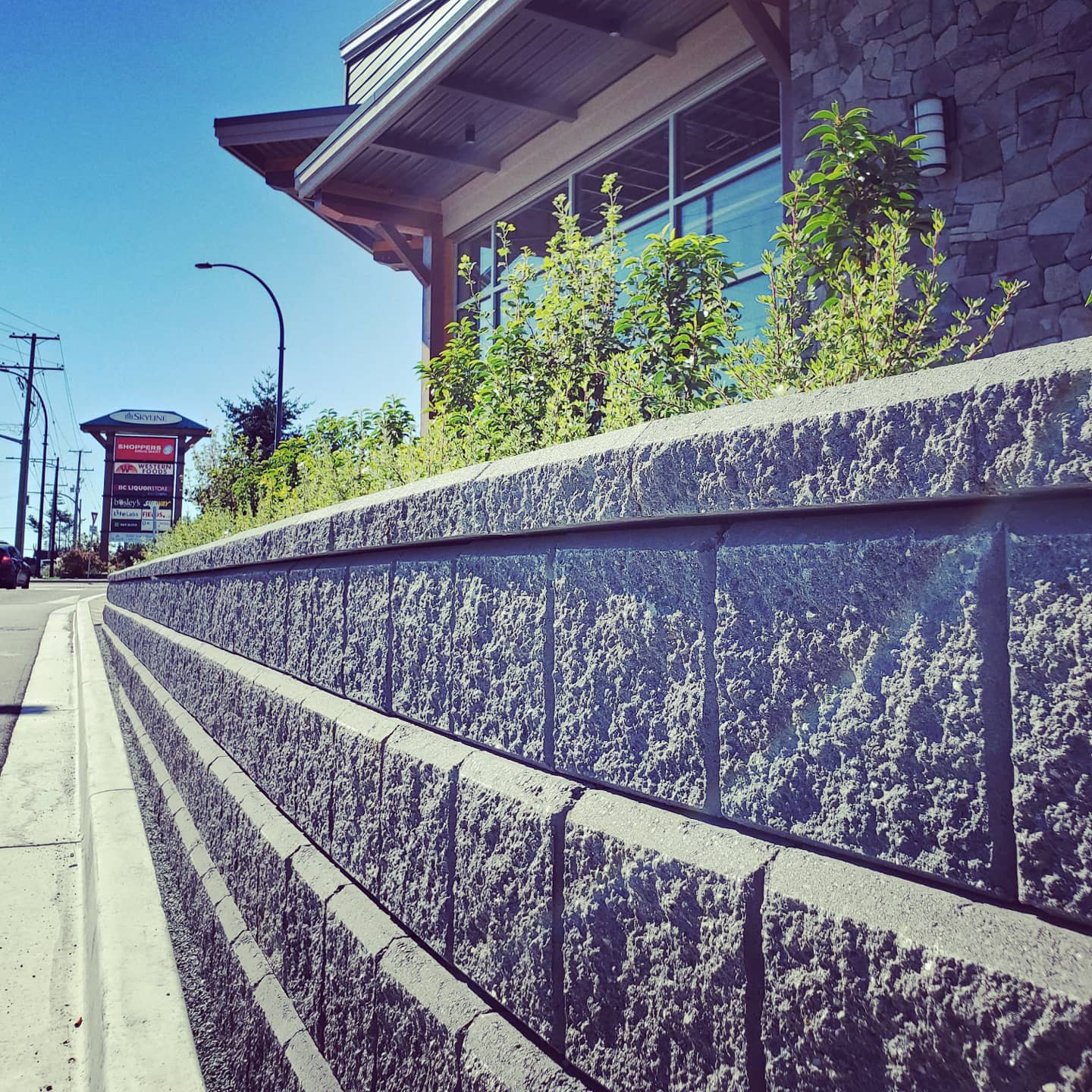
Welcome to LPS Insights
Stories, strategies, and straight-up lessons from real jobs. Built for pros, crews, and anyone who wants to understand what solid landscaping really takes

Misalignment: A Hidden Profit Killer in Landscaping
Why the Work Isn’t the Problem
Most landscape jobs don’t fall apart because of bad workmanship. The real issue starts earlier—before a shovel hits the ground. It starts when what’s in your head doesn’t make it to the crew, or when the client assumes one thing and the subcontractor does another.
You think everyone’s on the same page. They’re not. And when the results don’t match the vision, you’re the one who pays for it—in callbacks, rushed fixes, and strained relationships.
But the damage doesn’t stop at one job. Misalignment slows down your crew, burns up your time, and kills repeat business. It chips away at your reputation. It traps you in the field solving problems instead of building the business. Over time, it’s one of the biggest threats to your profitability—and your sanity.
This post breaks down the #1 reason landscaping projects go off track: misalignment. I’ll show you how it shows up, how it costs you money, and how using a simple, written standard can keep your jobs running smoother, your crew more accountable, and your clients better informed.
The Cost of Misalignment: A Turf Job That Should’ve Never Happened
We first met this homeowner when he reached out for a full landscape overhaul. He wanted planting, mulch, sod, irrigation—everything. We walked the site, asked the right questions, and sent him a detailed proposal. He said no. Too expensive.
About a year later, he contacted us again. The same list, just trimmed back. We revised the scope and pricing, but again, he passed. Said he’d keep looking.
Then a third call came in. This time, it was just turf. He wanted new sod in the backyard, nothing else. But he was firm about one thing—he didn’t want to pay for site prep. Said he could handle it himself and wanted us to do “just the install.”
Now, we’ve been around long enough to know what “I’ll do the prep myself” usually means. But he was persistent, and he’d already passed on us twice. So we agreed—on one condition. We told him we’d need to apply a fresh layer of screened soil on top before laying any sod. Just enough to level things out and give the roots something decent to start in. He agreed, we ordered the material, scheduled the install, and laid the turf.
At first, it looked fine. Good color, solid coverage, and no visible grade issues. But a few months later, right after a wet winter stretch, we got an email. The turf was failing. He said it had never rooted properly and now looked thin, yellow, and patchy. He was blaming the time of year, but his tone was clear—he wanted us to fix it, at our cost.
I had a gut feeling something was off. So we asked for permission to inspect the site while he was out. When we arrived, everything looked normal at first glance. But when we pulled a few core samples from the lawn—about 8 inches deep—it told a different story.
Beneath the thin layer of soil we had applied was a rock-hard, compacted base. It was what landscapers call hardpan. Water couldn’t drain. Roots couldn’t break through. It was a sealed lid under the surface. All the work he’d done to “prep” the site had turned into the exact thing that kills turf in the first six months.
We followed up and asked if he had done any soil testing before starting. He said he had, and sent over a PDF. But what he actually sent were perk tests from when the property was developed—over 15 years ago.
We weren’t dealing with a turf failure. We were dealing with a misalignment. He thought prepping the site himself would save money. We assumed he understood that his soil was his responsibility. And when the results didn’t meet his expectations, we were the first target.
In the end, we didn’t eat the cost. We had documentation, samples, and clear notes. But the stress, the follow-up, and the friction could’ve been avoided completely—if the job had been grounded in a standard that spelled out what was required and why.
When there’s no written benchmark—no scope, no install checklist, no shared expectation—everyone fills in the gaps with their own assumptions. That’s misalignment. And in landscaping, it’s the most expensive thing you never bill for.
How a Standard Stops the Slide
When you don’t have a written standard, everyone fills in the blanks with their own version of “good enough.” That’s the root of misalignment. It’s not that people are lazy or careless—it’s that they’re guessing. The client assumes one thing. Your crew assumes another. And unless you’ve got something in writing to align expectations, you’ll always be the one stuck in the middle when it falls apart.
A standard changes that.
It gives you a reference point—something everyone can look at and say, “This is how we do it here.” Not based on memory or verbal walkthroughs. Not hidden in your head or your foreman’s. But in black and white.
In that turf install job, a standard could’ve made the difference. We would’ve had a documented scope that said: client-prepared soil must meet specific drainage criteria or the job doesn’t proceed. We could’ve shown him the install requirements before he started. He’d have known upfront what “ready for sod” actually meant. And if he didn’t want to follow it, we’d have had a clear reason to walk away.
It’s not about being rigid or trying to control everything. It’s about making expectations visible—and protecting your business when things go sideways.
With the LPStandard, you’ve got that clarity built in. It covers what’s required for a solid install—from base prep to planting depth to final inspection. It’s written in jobsite language, not legalese. Your crew can follow it. Your clients can understand it. And you can build trust without having to micromanage every detail.
Alignment isn’t a one-time conversation. It’s a system. And a good standard gives you that system without adding more to your plate.
Final Thoughts: Clear Standards Build Profitable Jobs
Misalignment doesn’t always show up as a dramatic failure. Most of the time, it sneaks in as small misunderstandings—tiny gaps between what was said and what was understood. And over time, those gaps become profit leaks. They eat your time, drain your patience, and put your reputation on the line.
You don’t need to overhaul your business to fix this. You just need a reliable way to keep everyone—from your newest hire to your most stubborn client—on the same page. That’s what the Landscapers Practical Standard is built for.
LPStandard isn’t a stack of theory. It’s a jobsite-ready tool you can hand to a crew lead or use in a client meeting. It tells people what “done right” looks like, step by step. And that’s how you prevent turf failures, missed steps, and finger-pointing down the line.
If you're tired of holding the whole job together by memory and constant check-ins, stop running your business on guesswork. Start using a standard that actually works in the field.
Get the LPStandard now and start aligning your team, your clients, and your bottom line.

Why You Need a Landscaping Standard
What Is a Landscaping Standard and Why It Could Save You Thousands
The Real Cost of "Good Enough"
If you’re a landscaper who’s built your business from the ground up, chances are you’ve had that gut-punch moment. A client calls two weeks after a job is finished. The new sod is yellowing. The patio stones are shifting. Or worse—a tree you installed is leaning sideways because someone buried the root flare.
You send a crew back to fix it. You cover the cost. You lose time, profit, and a little bit of confidence in your team.
This kind of rework isn't just annoying—it’s expensive. And most of the time, it happens because there was no clear standard for what "done right" actually looks like.
In this post, we’re talking about what a landscaping standard really is, why it matters more than you might think, and how using one can save your business thousands of dollars in avoidable mistakes.
What Is a Landscaping Standard (And Why It Matters)
A landscaping standard is simply a clear, written reference for how the work should be done—step by step. It's not just about the end result. It includes things like:
How deep a planting hole should be
What counts as proper soil prep
Where to stake a tree and when not to
How to grade a site so water flows the right way
Think of it like a playbook. It lays out what "good work" looks like so your team isn't guessing, your clients know what to expect, and your subs don’t improvise in ways that cost you money.
Most landscaping companies don't have a real standard. They have experience, and they have memory. That works for a while. But as soon as you're not on site, or you hire someone new, things start to slip.
That’s when jobs go sideways.
A good standard gives your business structure. It turns gut-feel into systems. It helps you quote more accurately, train faster, and avoid rework that eats your margins.
A Real-World Example: The Cost of Missing the Details
A friend of mine owns a small landscaping company just outside Toronto. Great work, sharp team. They landed a job installing a new lawn and front bed for a high-end home.
They laid sod on a tight deadline—weather was turning, and the client was eager. A week later, the whole lawn was yellowing. The soil hadn’t been properly tested. What looked like decent soil was actually a mix of compacted clay from old construction and native soil.
They had to rip it out, re-grade the area, bring in new topsoil, and re-sod the entire front yard. The crew lost a full week. The materials were a loss. The client was frustrated. And all of it could’ve been avoided if someone had just followed a checklist that said: "Test the soil first."
The Profit Leak You Can’t Afford
Every time you send a crew back to fix something, you're not just solving a problem—you're eating your own profit. You paid once to do it wrong, and now you're paying again to make it right. That’s double the labor, double the materials, and zero return on either.
Even the small stuff adds up. Miss the grade by an inch, and you’re back onsite reworking drainage for half a day. Plant the root flare too deep, and you’re replacing a tree next season under warranty. Let a new hire guess their way through soil prep, and you’ll be footing the bill for dead turf when the weather turns.
Do the math. If your crew spends just two hours a week on callbacks, that’s 100 hours a year. At $50 an hour in labor and overhead, you're losing $5,000—and that's without factoring in material costs or lost opportunities. Add a couple full-blown reworks in a season, and you’re down $10,000 or more before you even notice it.
A clear standard is how you stop the bleeding. It gives your crew the clarity to do it right the first time, cuts down on waste, and protects your margin from death by a thousand fixes. It also tells your clients—and general contractors—that you run a tight ship. That builds trust. And trust wins repeat work.
You Don’t Need a Giant SOP Binder
Some people hear "standard" and think they need to write a hundred-page manual or hire a consultant. You don’t. What you need is something clear, usable, and built from the field—not a boardroom.
That’s where the Landscapers Practical Standard (LPStandard) comes in. It’s not theory. It’s not fluff. It’s a field-ready reference built for working contractors. You can hand it to your lead hand or your new guy and say, "This is how we do things here."
Final Thoughts: You Can’t Scale Guesswork
If you're trying to grow from one crew to two, or from five jobs a month to ten, the guesswork has to go. You can't build a reliable business on memory and best intentions.
You need structure. You need clarity. And you need a way to do good work, even when you’re not standing over someone’s shoulder.
The LPStandard gives you that. It’s built for the kind of business you’re running. Use it to avoid expensive mistakes, train faster, and keep your profit where it belongs—in your pocket.
Ready to stop paying for the same mistakes twice?
Grab your copy of the Landscapers Practical Standard and start building smarter today.

Why “Scope of Work” Is the First Thing That Goes Sideways
If you’ve ever walked onto a job site and heard “I thought you were doing that,” you’ve already felt the sting of a blurry scope of work. It’s one of those things that sounds boring on paper but ends up being the first domino to fall when things start going sideways.
In the landscaping world, clarity matters. The client thinks one thing, you remember another, and your crew’s just doing what makes sense in the moment. That’s how jobs spiral. Most mistakes don’t come from laziness or bad crews. They come from unclear expectations.
So, what exactly is the scope of work, and why does it deserve your attention before you break ground?
What Is a Scope of Work, Really?
Think of the scope of work as the job written out in plain language. It’s not the quote. It’s not the wish list. And it’s definitely not the picture the client showed you on Pinterest.
The scope outlines what you’re doing, what you’re not doing, and who’s handling what. It sets the boundaries.
Let’s say you’re laying sod for a client. Are you also responsible for grading the yard? Who’s supplying the topsoil? Who’s cleaning up the debris from the old lawn? These details seem small until they’re missed. Suddenly, you’ve got a crew standing around with fresh sod and nowhere to put it.
The scope takes those “I assumed” moments off the table.
What Happens When There’s No Scope?
A vague or missing scope turns a simple job into a guessing game. Crews do what they think is right. Clients expect things you never agreed to. Materials show up too early or too late. And the timeline starts slipping.
Here’s what tends to happen:
Tasks get missed or doubled up
Clients get frustrated because expectations aren’t met
You burn time explaining or redoing work
You absorb extra costs just to keep the peace
All of that eats into your profit and your reputation.
What It Looks Like When It’s Done Right
When the scope is clear, everyone’s pulling in the same direction. Your crew knows what to do without checking in constantly. Subcontractors understand where their work starts and ends. Clients stop micromanaging because they feel confident the job is under control.
It doesn’t have to be a 10-page contract. A simple one-page breakdown does the trick. Even a checklist or a few bullet points reviewed before starting can keep things on track.
You’re not just building landscapes—you’re managing a moving machine of people, materials, and timing. The scope is your instruction manual.
Why the Owner Needs to Know the Scope Too
This isn’t just for crews. If you’re the owner, you need to be just as clear on the scope—especially when pricing jobs.
A lot of underbidding happens because parts of the job weren’t included in the original quote. You didn’t charge for hauling debris, but now you’re paying two guys to fill a trailer on a Friday afternoon. That’s on you.
When the scope is fuzzy, the default is that you pick up the slack. Not the client. Not the crew. You.
Keeping the Scope Front and Center on Site
Once the job starts, don’t let the scope collect dust in your files. Keep a copy of it in the truck. Send it to your foreman’s phone. Walk the crew through it before tools hit the ground.
This doesn’t need to be some formal meeting. A quick two-minute rundown can save you two hours of fixing something later.
Ask:
What are we here to do?
What are we not doing?
What’s the first thing we’re knocking out today?
Those three questions alone keep the job flowing smoothly.
Final Thoughts
The best jobs—the ones that finish on time, on budget, and without headaches—don’t just run well by chance. They’re scoped well from the start.
It’s not about making things complicated. It’s about removing confusion. When everyone knows what they’re responsible for, you waste less time, spend less money, and deliver exactly what you promised.